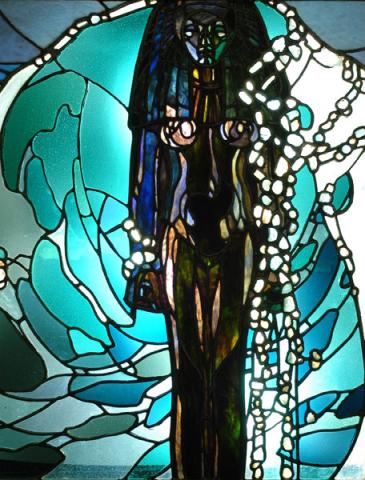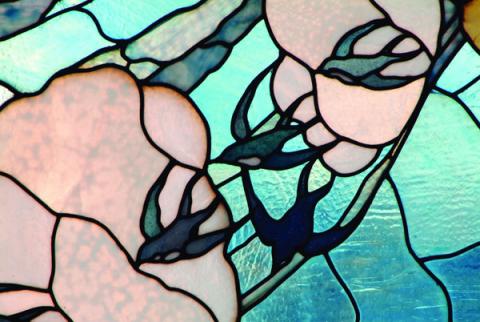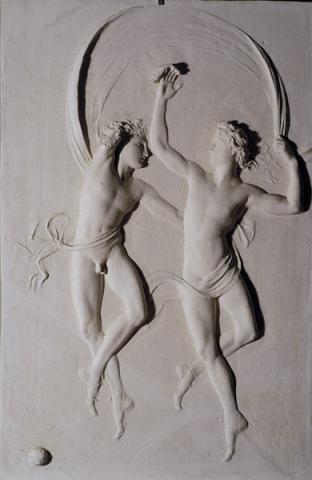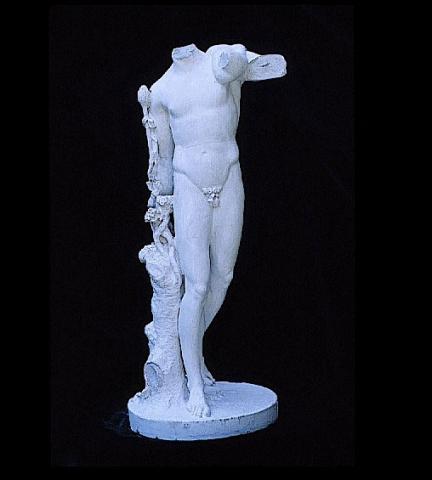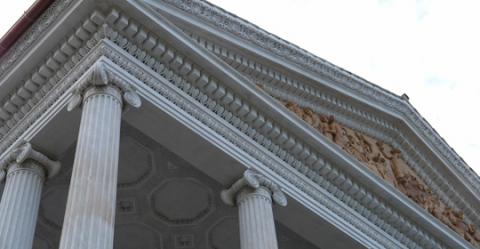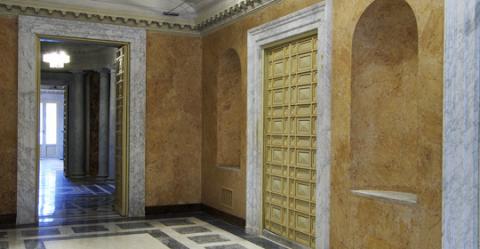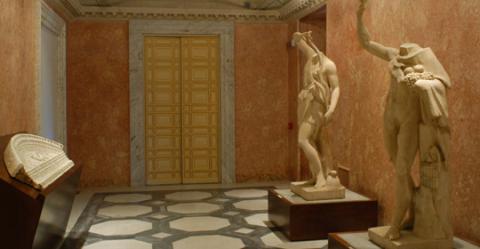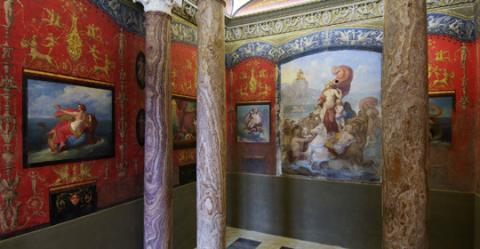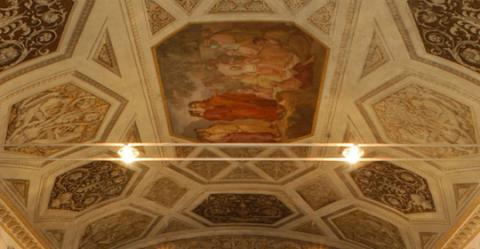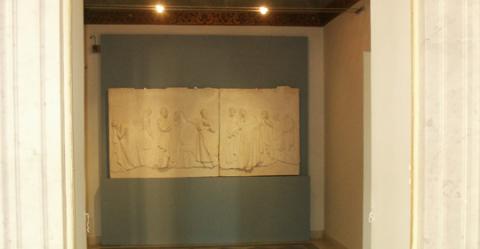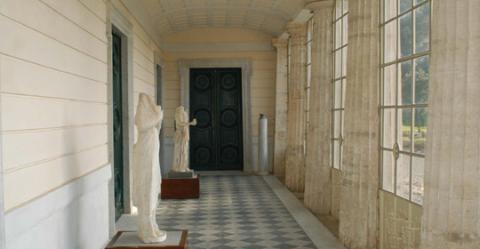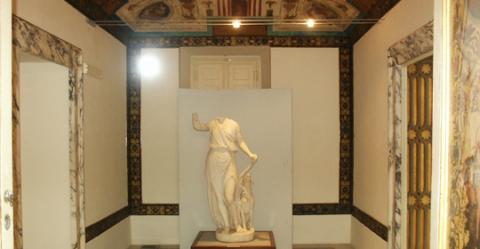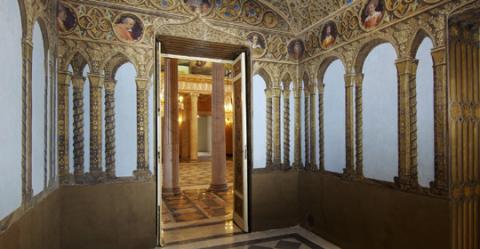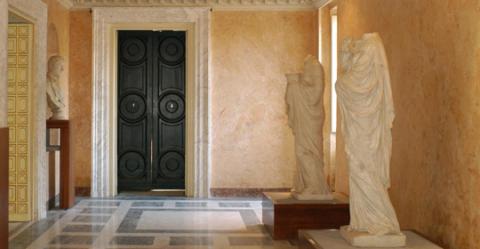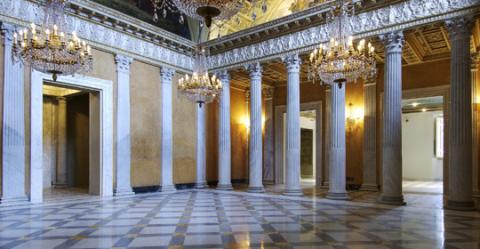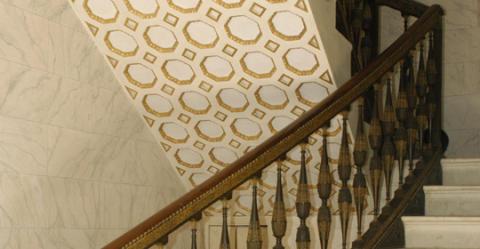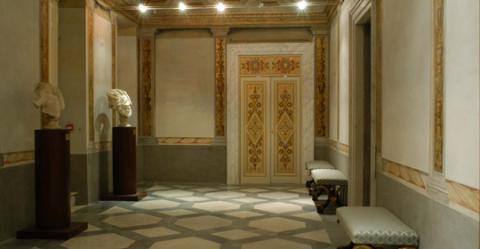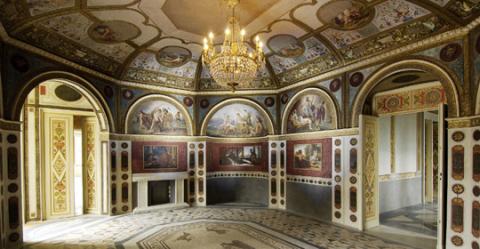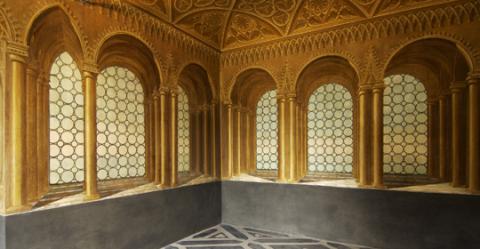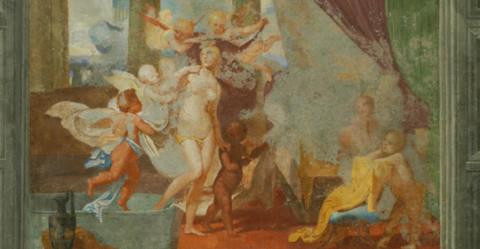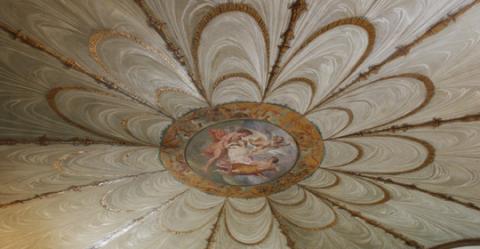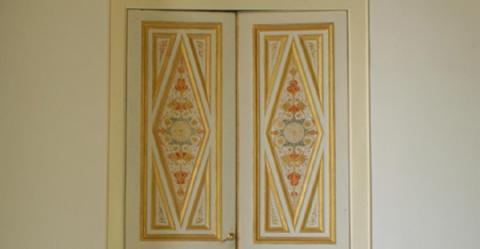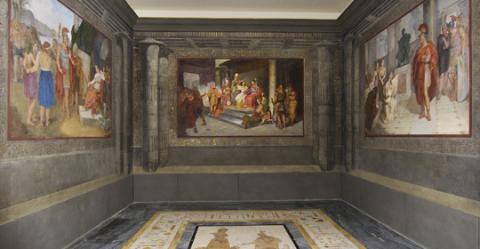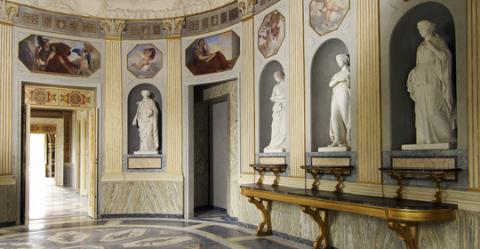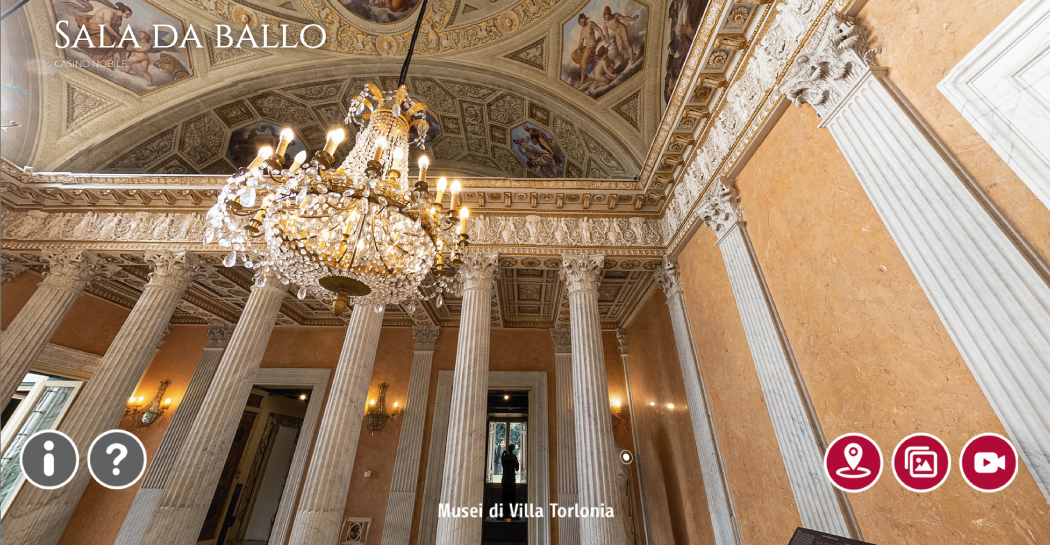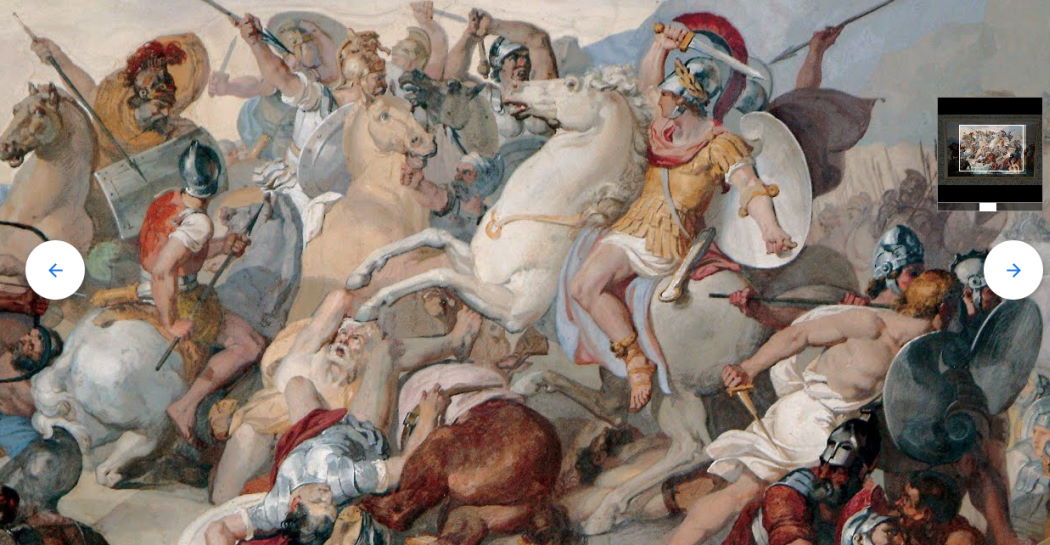Route for rooms of Casino Nobile
The Casino Nobile, which is already a "Museum" from the architectural and decorative point of view, houses a small but valuable museum dedicated to what was found in the Villa and originating from the very rich statuary collection of the Torlonia family - today largely still owned by the family and preserved in the Palazzo di via della Lungara - together with some fortuitous finds, which have made it possible to add a further piece to the history of the Villa.
What is on show gives us a precise idea of how the Torlonia family, in particular Giovanni (1756-1829) and his son Alessandro (1800-1880), managed, for almost a century, to be the undisputed leading lights in the tradition of collecting that originated at least in the fifteenth century, when the residences of the illustrious Roman families began to be enriched with precious furnishings.
The origin of the works on display is not homogeneous: they are partly related to the production of Bartolomeo Cavaceppi, the well-known sculptor, restorer, antiquarian, whose collection was purchased by Giovanni Torlonia in 1800, come partly from excavations in the family estates and partly are furnishings of the Villa itself, which survived the dispossession, some of which were found fortuitously in the basements of the Theatre. Of particular interest are the three large plaster reliefs by Antonio Canova, a Michelangelo-style female head, some furnishings from the demolished Cappella della Villa and a precious marble pediment from the Tomba di Claudia Semne sull’Appia Antica.
The museum path is completed by the reconstruction of the Bedroom of Giovanni Torlonia (1872-1938), with the furniture that was then used by Benito Mussolini, at the time of his stay in the Villa itself, from 1925 to 1943.


























